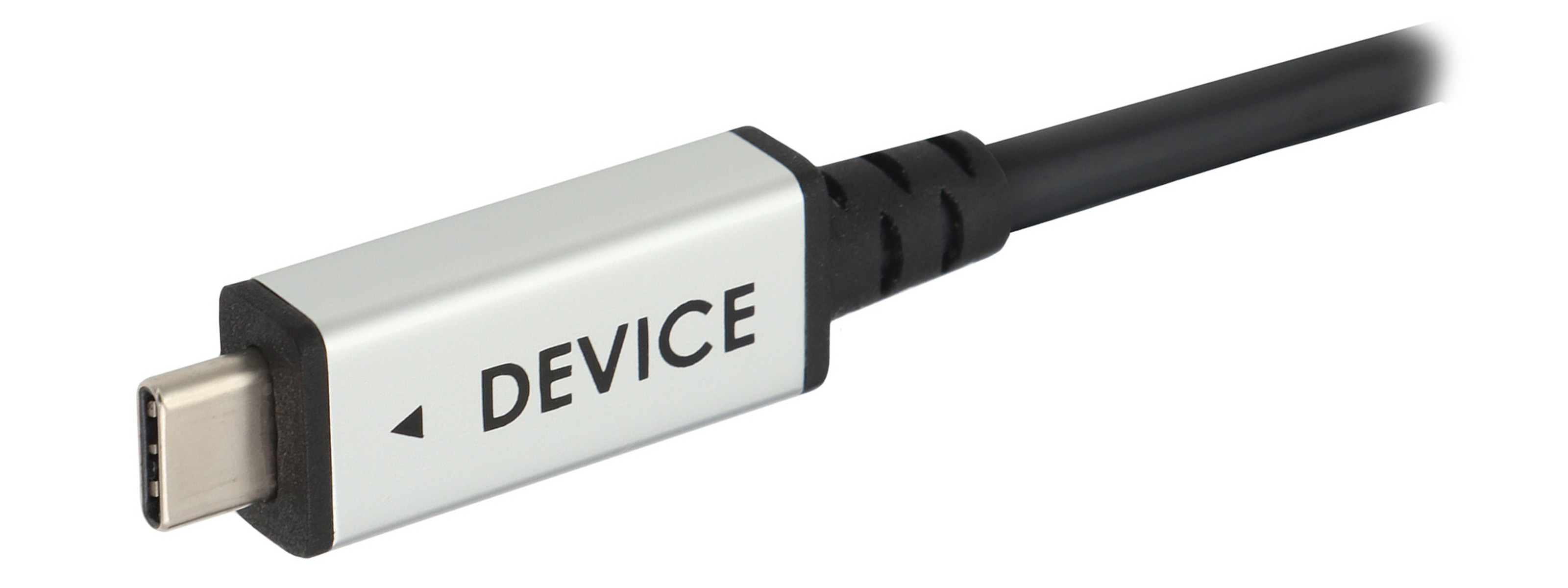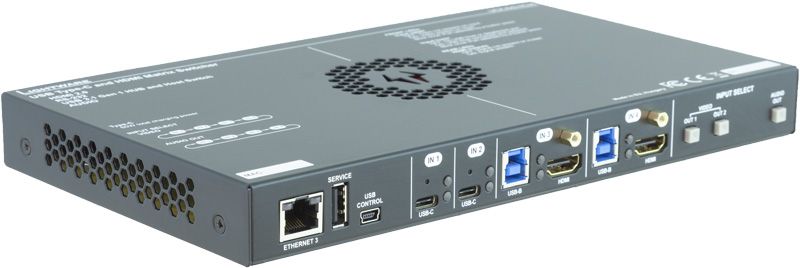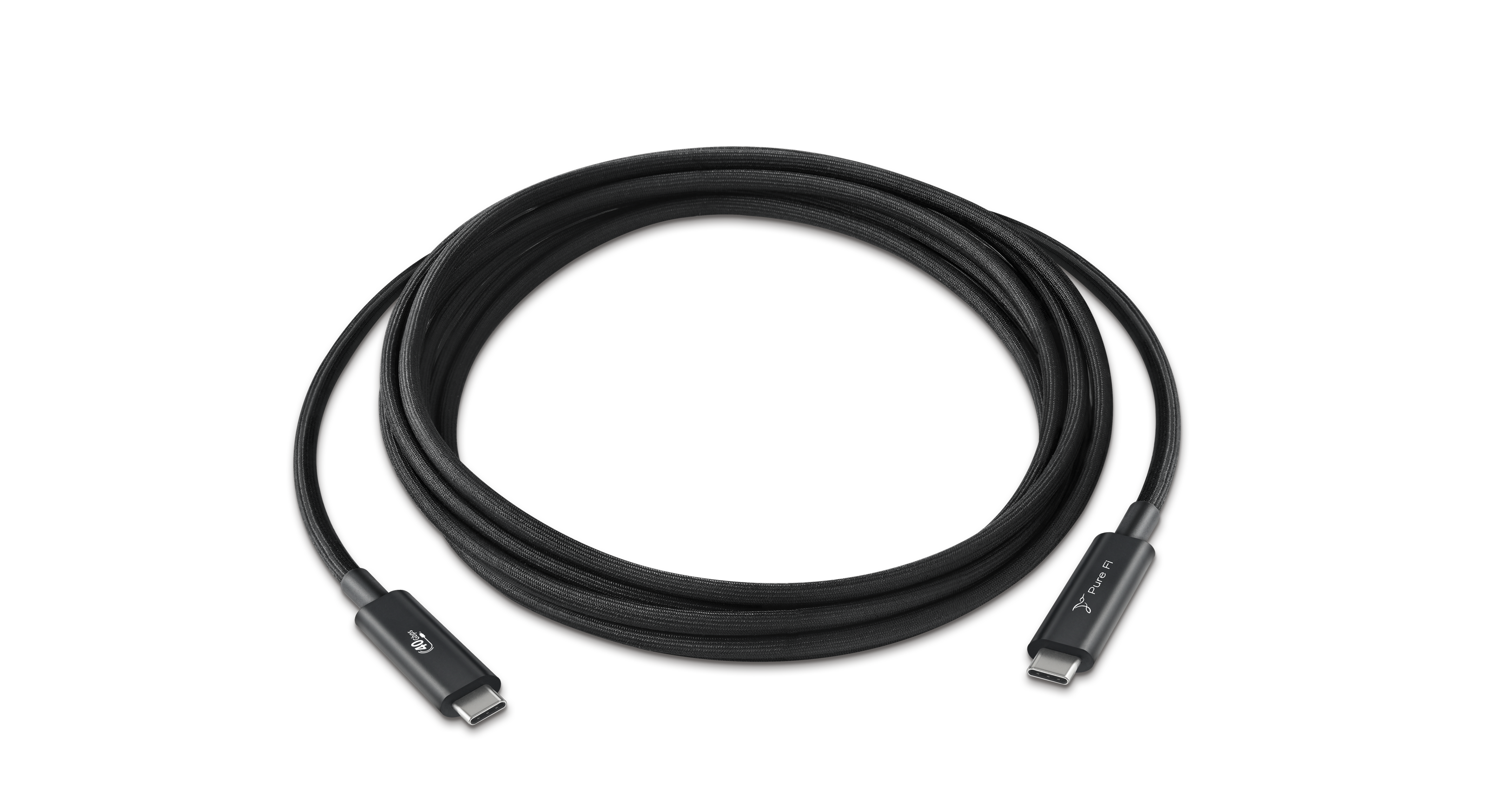USB-C: One Size Fits All?
With the Version 2.0 USB4 specs introduced last fall, USB-C might become the only connector we need.

The transition from analog to digital audio and video signal formats over the past two decades has completely redefined the Pro AV industry. It’s enabled us to pack more pixels on the screen and distribute immersive audio to speaker arrays. We can move data at lightning speeds, use network switches and software to distribute audio and video, and stream 4K content with high dynamic range over fast networks to the home.
[C2G Boosts USB Signals With New USB-C Extender Transmitter to Receiver Kit]
But there’s one task that has yet to be accomplished: consolidate all the different types of connectors in use for video, audio, control, and power. Given the myriad of connectors we were forced to use in the analog days, we’ve come a long way toward consolidation: HDMI and DisplayPort can both carry embedded audio, and the latter interface also provides low-voltage power. Twisted-pair signal extenders can transport power over ethernet (PoE) along with RS-232 (still around!) and infrared signaling (also still around!), but that adds another level of complexity.
USB-C Advantages
Until a few years ago, these video and audio interfaces existed separately from high-speed data transported over the universal serial bus (USB) interface. HDMI, DisplayPort, and USB 2.0 were commonly found together on signal extenders (and on some matrix and presentation switchers) but remained in their own lanes. That is, until the development of the USB Type-C connector, concurrent with the release of the USB 3.0 standard.

The Type-C connector is a totally different animal than older USB Type A, mini, and micro versions. For one thing, Type-C is a compact 24-pin symmetrical connector, meaning it makes no difference which way you plug it in. (This is a very handy attribute when trying to charge your phone after a late night.) Type-C is also a “smart” connector, configuring its pins to fit the application. Need to move files and charge a device? Done with no fuss and no muss. Need more lanes to move data? You got it.
What really makes Type-C the cat’s pajamas is that it can also transport display and audio signals using what’s called Alternate Mode. If your laptop has Type-C ports, it doesn’t need a separate HDMI or DisplayPort jack—simply connect a monitor using a Type-C cable, just as you’d connect an external solid-state drive. (While fully compatible with DisplayPort, Alternate Mode only works with HDMI version 2.1, not 2.0 or 1.3/1.4.)
Need for Speed
Now, USB has gotten even faster. Last October, the USB Implementers Forum (USB-IF) published its USB4 Version 2.0 specification, which claims a maximum data rate of 80 Gbps over Type-C cables and connectors. That is a significant boost in performance for UHD displays, storage devices, and USB-based hubs and docks. The USB Type-C and USB Power Delivery (USB PD) specifications have also been updated to support this higher level of data performance.
A daily selection of the top stories for AV integrators, resellers and consultants. Sign up below.
As more manufacturers get on board with Type-C interfaces and signal management products, there will be a push to consolidate and simplify the number of connectors and cables we use with computers and displays.
In its press release, the USB-IF touted “…Up to 80 Gb/s operation, utilizing a new physical layer architecture based on PAM3 signal encoding, over existing 40 Gb/s USB Type-C passive cables and newly-defined 80 Gb/s USB Type-C active cables.” (PAM stands for Pulse Amplitude Modulation, a signaling system also used for HDBaseT signal extenders.) Note, the maximum data rate of 80 Gbps applies only when all lanes are used for data and no other applications.
[Ready, Set, Ship—Magewell's USB Fusion Device Now Available]
Another feature of USB4 and the “smart” Type-C connector is adaptive data transfer rates. From the press release: “Optionally for certain applications, such as driving very-high performance USB4-based displays, the USB Type-C signal interface can be configured asymmetrically to deliver up to 120 Gb/s in one direction while retaining 40 Gb/s in the other direction.”
You couldn’t even conceive of doing that with older versions of HDMI, any version of DVI, or analog connectors. USB4 will also enable Enhanced SuperSpeed USB data tunneling to exceed 20 Gbps (per lane) and is compatible with DisplayPort Revision 2.1 and PCI Express Revision 4.
Why is that extra speed so important? Consider that an UltraHD monitor (3840x2160 pixels) with a refresh rate of 120 Hz (for gaming) and 10-bit RGB color requires a display data rate of about 43 Gbps. Both HDMI and DisplayPort upgraded their specifications in recent years to get well above 50 Gbps to support high frame rates and increased color bit depth. Now, they have a universal serial data interface that’s catching up.
Migration to Unification
I say “universal” because a migration to Type-C—something Apple is already doing to switch from its proprietary Lightning connector—offers economies of scale to commercial and consumer electronics manufacturers. If one connector can do all the heavy lifting, why not let it while reducing the number of parts that have to be populated on circuit boards? Some laptops already have multiple Type-C connectors, with one typically supporting Alternate Mode and others optimized for data and power.
Like any other signal, USB bits can be shared across multiple destinations through hubs (equivalent to distribution amplifiers). They can also be sent to specific destinations through switchers. And we’re already familiar with the operation of these products for moving HDMI and DisplayPort signals. Manufacturers of signal management and distribution products are now expanding their lines to add USB hubs and switches.

There are also hybrid switcher products coming to market that mix Type-C and HDMI inputs, although the maximum data rate through the Type-C ports is currently limited. One example I found from Lightware provides two Type-C and two HDMI 2.0 inputs with a maximum data rate of 18 Gbps (good enough for UltraHD/60 with 8-bit RGB color) and two HDMI 2.0 outputs. These are baby steps to be sure, but then it’s still early in the game for exploiting all the features of the Type-C interface.
As we all know now, significant changes in the features and connectivity of commercial electronic hardware are all driven by changes in consumer electronics. The migration by Apple to USB Type-C connectors will likely lead to other laptop brands doing the same thing, although it may take some time before they’re comfortable dropping separate HDMI interfaces. (The migration of DisplayPort to Type-C is happening at a much faster rate, as that connector isn’t as widely used as HDMI.)
[USB Type-C: One Port to Rule Them All]
And what happens to the Thunderbolt data interface? Thunderbolt 3 and Thunderbolt 4 ports look exactly the same as USB-C ports and their connectors are physically identical. You can connect a USB-C device into a Thunderbolt 3 or 4 port without any problems. Currently, Thunderbolt holds the edge in data transfer speeds (40 Gbps) and will continue to do so for a while, as adoption of USB4 will—like any new signal interface format—take time. And Thunderbolt can also transport display and audio signals.
Still, the writing is on the wall for discrete signal interfaces. As more manufacturers get on board with Type-C interfaces and signal management products, there will be a push to consolidate and simplify the number of connectors and cables we use with computers and displays. And from my perspective, USB4 Type-C is the most likely candidate to emerge the winner.
Pure Fi Offers New 40 Gbps USB-C Cable

In January, Pure Fi unveiled its Pure Fi USB Type-C Active Optical Cable (AOC). One of the first USB-C active optical cables offering speeds of up to 40 Gbps up to 30 feet, the new cable is ideal for applications that require high-speed connectivity between devices not located close to one another. Compatible with the latest USB4 and Thunderbolt 3 and 4 devices, it offers bi-directional connectivity across a wide range of current and legacy USB devices.
With a cable diameter of just .2 inches, the Pure Fi USB-C AOC’s sleek form factor ensures connectivity without being encumbered by thicker cabling options. Plus, the 30-foot cable allows users to place external drives and other peripherals in a closet or in another room, moving noise and heat production away from the workspace. Its ability to deliver up to 60W of power over USB-C is also ideal for VR applications, as the cable delivers a steady charge for hours of uninterrupted use.
Pete Putman, CTS, KT2B, is the president of ROAM Consulting.

